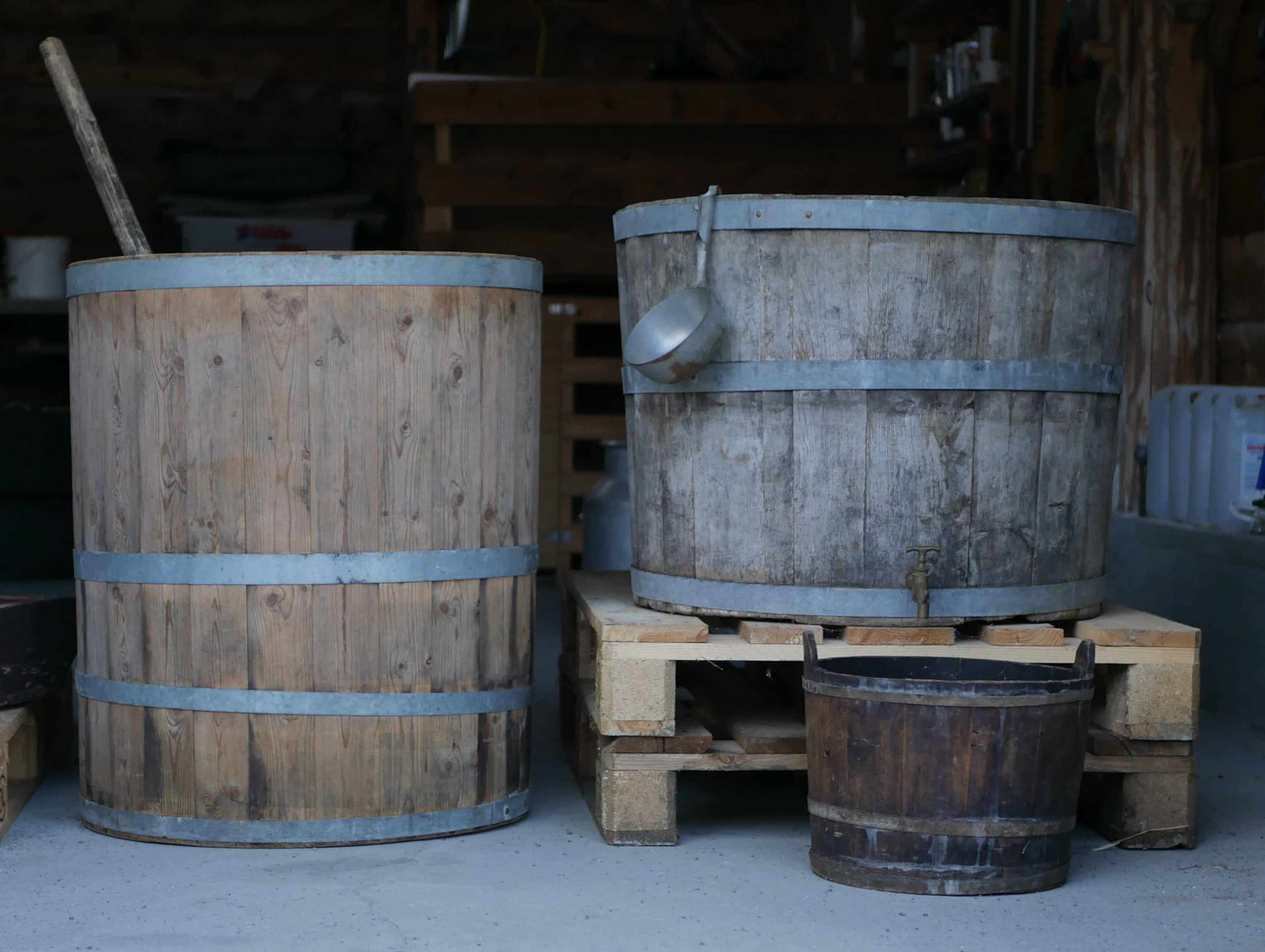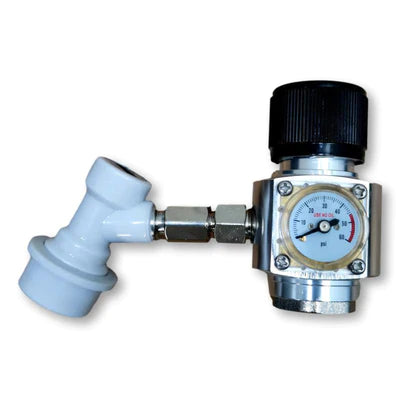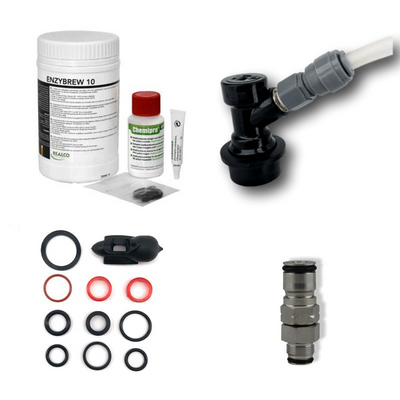Free & Fast Shipping Options In EU
Free & Fast Shipping Options In EU
About
Kegging Gear

Kveik Yeast: What is it and how to use it
December 15, 2025 6 min read
Home brewers are always looking for new things to learn, and new ways to brew. Fortunately, as a hobby, homebrewing provides countless variables that can be manipulated to twist and tweak your recipes, and create an ever growing variety of different beer styles and hybrids. We all know that yeast is extremely important in the creation of beer, but for many brewers, it’s seldom given much thought.
However, delving into the myriad of different yeast strains out there can take your brewing into new realms. One particularly exciting yeast that is rapidly gaining popularity is the Norwegian Kveik yeast. Once used exclusively by a handful of Norwegian farmers, the rest of the world is slowly catching on to how this amazing yeast can transform their brewing endeavours.
We must thank the Godfather of Kveik, Lars Marius Garshol of Larsblog, whose passion and devotion to this special yeast has helped bring it to worldwide acclaim since he first encountered it in 2013. But what is Kveik yeast exactly, and how should you go about using it? Let’s take a look below.
What is Kveik Yeast?
 Kveik is a Norwegian word meaning yeast, though it’s not the only word for it. Indeed, it’s mostly used in Western Norway when referring to the yeast used in Norwegian farmhouse ale. These yeasts have often been passed down from generation to generation, around small farming communities in Norway, allowing the yeast to take on an entirely different set of characteristics when compared to typical European yeast strains.
Kveik is a Norwegian word meaning yeast, though it’s not the only word for it. Indeed, it’s mostly used in Western Norway when referring to the yeast used in Norwegian farmhouse ale. These yeasts have often been passed down from generation to generation, around small farming communities in Norway, allowing the yeast to take on an entirely different set of characteristics when compared to typical European yeast strains.
It’s hard to know exactly how long Kveik yeast has been around for, but it’s safe to say the years roll into the high hundreds. Evidence of the widespread use of Kveik in Norwegian farmhouse ales can be found as far back as the early 1600s, and it’s likely to have been in use far earlier. Unlike other farmhouse yeasts, Kveik can be harvested and dried, ready to use again and again.
This long term re-use among different communities, and even different families, has allowed an array of different Kveik varieties to develop, each with their own individual flavour profiles. Local beer drinkers can typically tell which brewer in their community brewed a particular beer, based purely on the yeast profile. As such, Kveik doesn’t describe one single type of yeast, rather a whole host of yeasts with similar characteristics, but potentially entirely different flavour profiles.
Kveik Yeast Characteristics
Whichever family or farm the Kveik has come from, and regardless of which flavours it exhibits, Kveik yeasts all exhibit the following characteristics, nurtured over many years of use. Many of these aren’t found in typical yeast strains more commonly used in brewing, making Kveik an exciting yeast to brew with.
- Kveik yeast flavour profiles are generally ester-driven
- They’re typically non-phenolic
- They’re able to ferment at high temperatures, up to 43℃, though they can also ferment at lower temperatures
- Fermentation normally begins very fast — activity can be seen in just 30 minutes sometimes, and will be completed within 3 or 4 days
- Kveik yeasts have high attenuation
- They have high flocculation as well and will drop out of suspension quickly
- Kveik yeast can be readily harvested, either top or bottom cropped (or both) depending on the strain
- They have a high alcohol tolerance
A Fistful of Kveik
Many of the original Kveiks are made up of several yeast and bacteria strains, which contributes to the unique flavour profiles each exhibit. Sadly, many have died out as Norwegian farmhouse ale brewers moved to more typical commercial yeasts once they became more readily available. Fortunately, some brewers stuck to tradition, and with the help of Lars, some of their Kveiks have been analysed and made available commercially.
Many Kveiks exhibit fruity aromas and flavours, with tropical and citrus fruit being common. Orange, lime, grapefruit, mango, melon, pineapple and even banana regularly make an appearance, but depending on the strain, you might note funky, earthy, mushroom and caramel flavours, among others. Check out a full list here.
If you want to buy Kveik yeast, you can often find the following strains online, each one hailing from a particular farmstead or family.
- The Yeast Bay: Sigmund’s Voss Kveik
- Omega Yeast: Voss Kveik
- Omega Yeast: Hornindal Kveik
- Omega Yeast: HotHead
How to use Kveik Yeast
![Riksarkivet (National Archives of Norway) from Oslo, Norway [No restrictions]](https://cdn.shopify.com/s/files/1/2435/3673/files/norwegian-farmhouse-ale-serve_medium.jpg?v=1552233217)
There’s a lot of hype around Kveik, and many brewers think that it’ll create something out of this world. All too often however, it doesn’t live up to the hype and brewers are left wondering what all the fuss was about. Nine times out of ten though, the yeast hasn’t been used properly.
Kveik isn’t like other yeasts, and needs special treatment if you want to get the most out of it. This means throwing the old rule book out the window and going against the grain. Bear in mind that while all Kveiks are related, they don’t all share the same flavour profile, so take care when choosing.
What to Brew?
First, think about what to brew. You might want to recreate a traditional Norwegian farmhouse ale, or even a ‘raw beer’- Oppskåke — and showcase the full flavour profile of Kveik. Alternatively, perhaps you want to put a modern twist on this ancient yeast, and use it to brew a more modern style; IPA, stout, etc. Just beware that extremely hoppy styles are likely to overpower the yeast flavours. Sometimes, you just want to brew something fast and not have to worry about fermentation temperature and off flavours, in which case Kveik is ideal.
Beer Strength & Nutrients
Kveik yeast is able to tolerate high alcohol environments, generally around 13 — 16%, and is used to having all the nutrients it needs, due to years of fermenting high abv beers. If you’re planning something with a lower abv, it’s well worth adding yeast nutrients to help it along. Without the extra nutrients, it can be slow to ferment and may not have as good attenuation as normal.
Pitching Kveik Yeast
In terms of pitching Kveik, you’ll get the best results by under pitching. Kveik is an extremely active yeast, and a little goes a long way. By under pitching, you’re far more likely to bring out those esters and create the fruity flavours Kveik is famed for. You can use dried flakes like traditional Norwegian farmhouse ale brewers, or a wet slurry, harvested from a previous batch or a starter. Nowadays, you can also buy commercial Kveik strains that are ready to pitch or be made into a starter.
A teaspoon of slurry pitched in 25 litres of wort will generally be more than enough to get going. It normally jumps into action relatively quickly, with visible signs of activity within 30 minutes not uncommon. Lag times can differ from batch to batch and strain to strain however.
Fermentation Temperature
Kveik is suited to fermentation temperatures between around 20℃ and 43℃. Temperatures at the higher end of the spectrum are generally preferred and are more likely to draw out the esters and flavours you’re looking for.
Fermentation Time
Kveik works quickly and will generally fully ferment a batch within 3 days depending on the strength of the beer. It’s also ready to drink quicker than beer made with normal yeasts, though a week or so of maturation will help it along.
If you plan to bottle, it’s worth being sure not to wait too long, as the yeast may drop out of suspension completely and stick to the bottom of the FV. In this case, you’d need to pitch extra yeast to ensure secondary fermentation in the bottle.
Harvesting and Storing Kveik Yeast
 The best thing about Kveik is that it can easily be harvested, stored and reused, without having to worry so much about cleaning it. Traditionally, Norwegian brewers would use a wooden Kveik stick or a Kveik ring, rolled in the yeast slurry or foam, and left to dry, in order to harvest it. You can harvest from the top by scooping up the foam on day 2 of fermentation, or from the bottom by collecting the slurry.
The best thing about Kveik is that it can easily be harvested, stored and reused, without having to worry so much about cleaning it. Traditionally, Norwegian brewers would use a wooden Kveik stick or a Kveik ring, rolled in the yeast slurry or foam, and left to dry, in order to harvest it. You can harvest from the top by scooping up the foam on day 2 of fermentation, or from the bottom by collecting the slurry.
Normally, the slurry can be kept in a glass jar in the fridge for up to a year, ready to use again whenever you need it. Just be careful that the sugars have been fully fermented and check the pressure in the jar periodically, as many Kveik strains continue to slowly ferment even in the fridge. If left unchecked, the pressure can build up and jars may explode.
If you want to dry your Kveik, smear some slurry onto a sheet of baking paper, and place into an oven, with warm air (around 30℃) circulating. Keep the door ajar and wait until the Kveik has transformed into a hard crust. Then, simply scrape the flakes into a ziplock bag and store in the freezer until needed. In this way, you can safely store your Kveik for in excess of 20 years.
Subscribe
Sign up to get the latest on sales, new releases and more …







